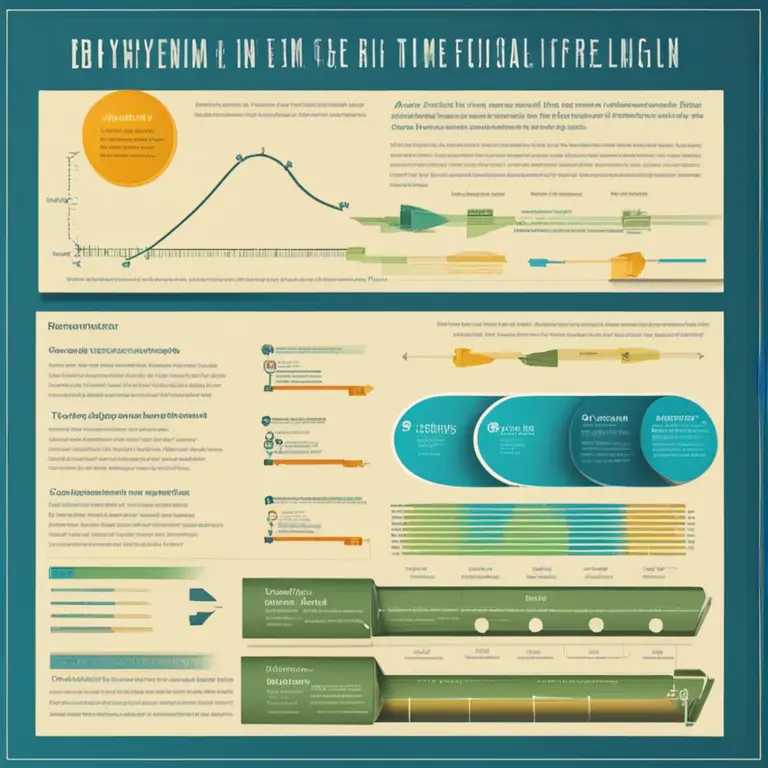
Biorhythms Explained: The Rhythms of Life
Delve into the intricate world of biorhythms to understand how they purportedly influence our physical, emotional, and intellectual states through life's natural cycles.
article by Adrian Wallace
What are Biorhythms?
Biorhythms are an intriguing pseudo-scientific concept that suggests our daily lives are affected by rhythmic biological cycles. The theory posits that from the moment we are born, three main cycles — physical, emotional, and intellectual — influence our capabilities and emotions. The physical cycle, with a span of 23 days, governs aspects like strength and coordination. The emotional cycle lasts 28 days, affecting creativity, sensitivity, and mood. Lastly, the intellectual cycle, repeating every 33 days, influences reasoning, alertness, and analytical abilities. These cycles are believed to oscillate between high and low phases, where the former represents a time of greater performance and the latter indicates a period where caution is encouraged.

Historical Origins of Biorhythms
The concept of biorhythms dates back to the 19th century but gained popularity through the work of Dr. Hermann Swoboda and Dr. Wilhelm Fliess at the beginning of the 20th century. Their separate research concluded that humans might be subject to predictable rhythms. While the medical community has not widely endorsed these theories, the idea resonated with the public, who saw it as a potential tool for personal growth and awareness. With the advent of digital technology and mobile apps, tracking one's biorhythms has become more accessible, catering to those who believe in aligning activities with their personal cycles.

Biorhythm Cycles in Detail
Each of the three biorhythm cycles starts at zero, moves into the positive phase, falls back to zero, then enters the negative phase before ascending again. When the cycle crosses zero, it's called a 'critical day,' a time purportedly prone to instability or uncertainty. For the physical cycle, high phases might be the best time for demanding physical activity, while during low phases, one might prefer rest and recovery. Emotional highs could be suited for impactful communication and connecting with others, whereas during emotional lows, one could focus on self-reflection. Intellectual peaks might favor problem-solving and learning, while troughs could be periods for routine tasks that require less cognitive effort.

Scientific Scrutiny and Criticism
Mainstream science regards biorhythms with skepticism, largely due to a lack of empirical evidence supporting the theory's predictive power. Various studies have attempted to corroborate biorhythm theory but have not found statistically significant results that validate its foundational claims. Critics point to the placebo effect and confirmation bias as the more likely explanations for why some individuals perceive biorhythms to be accurate. Despite the lack of scientific endorsement, many people continue to track their biorhythms, favoring personal experience and anecdotal evidence over hard science.

Biorhythms in Modern Use
Regardless of the scientific debate, biorhythm theory has become integrated into various lifestyle and wellness circles. Proponents often use biorhythmic calculations to plan important events, manage emotions, or tackle intellectual challenges. With the implementation of AI and data analytics, biorhythm apps of 2024 and beyond claim enhanced precision in tracking these cycles, offering tailored advice and predictions. Critics, however, urge users to remain cautious and not to rely solely on these predictions for making critical life decisions.
Finding Balance with Biorhythms
For those who follow biorhythms, the overarching goal is to achieve greater balance and harmony in life. Adherents believe that by anticipating the natural highs and lows of their cycles, they can optimize decision-making and improve their overall well-being. It's not uncommon for followers to seek alignment with their biorhythms for relationships, career planning, and health objectives. While it remains a personal choice to utilize biorhythm charts, the enduring interest in this concept underscores a desire to understand and navigate life's complexities through various lenses, scientific or otherwise.
Published: 1/30/2024
Modified: 1/30/2024
More predictions
Come back here soon to learn more about yourself and your future


Biorhythm Compatibility: Sync Your Cycles for Harmony
Discover the intriguing connection between biorhythms and relationship harmony. Learn how syncing your biological cycles can foster deeper compatibility.


A Guide to Biorhythms Journey
Embark on a journey of self-discovery through the science of biorhythms to optimize your life's potential.


Unlocking The Biorhythms Guide
Delve into the fascinating world of biorhythms to learn how they influence your physical, emotional, and intellectual states, potentially shaping your daily life and decisions.